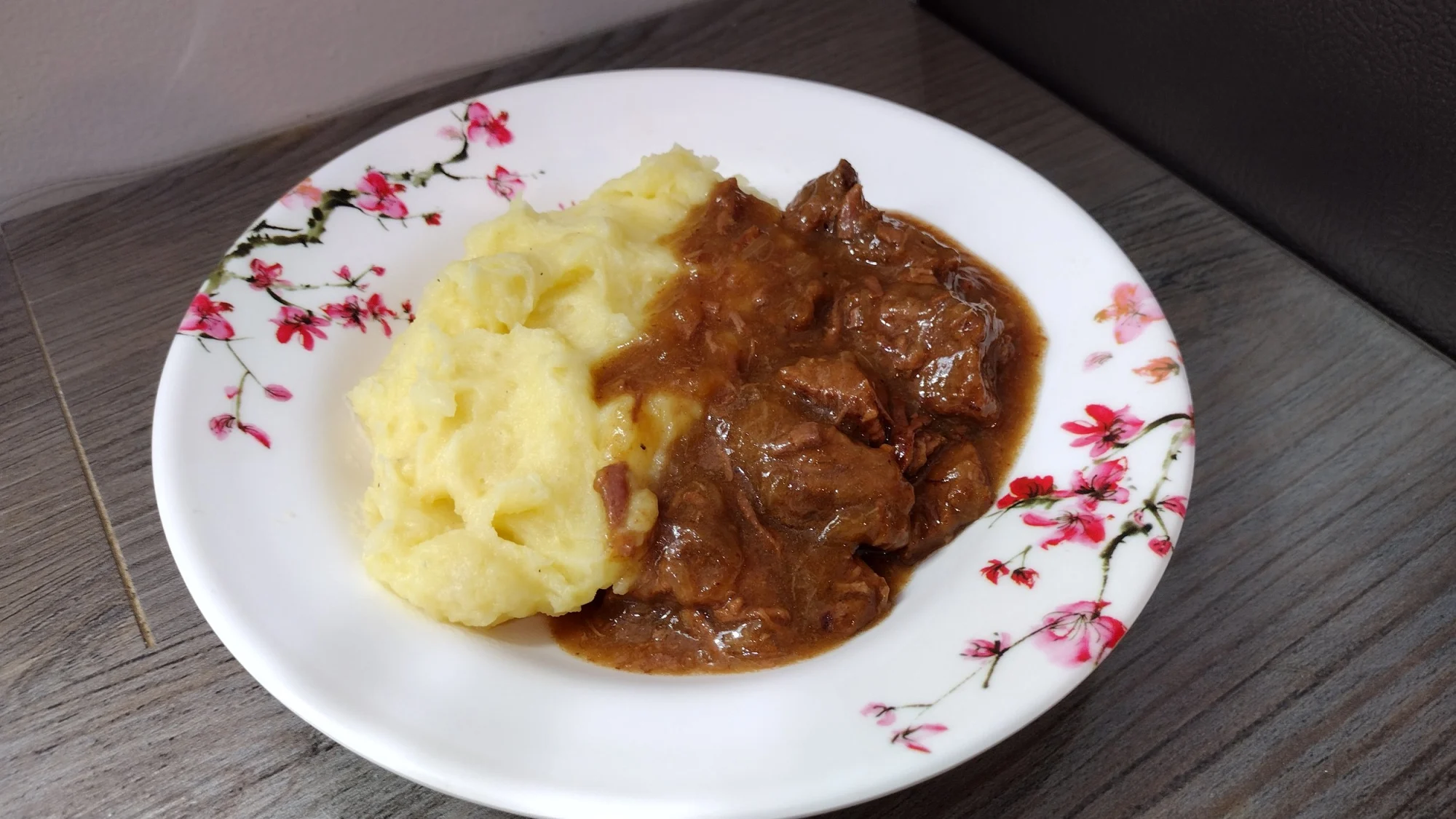
Hachee
Traditional Dutch beef and onion stew seasoned with bay leaves and juniper berries.
Ingredients
- •Beef
- •Onions
- •Bay leaves
- •Juniper berries
- •Vinegar
- •Beef stock
- •Flour
- •Butter
Instructions
Brown Meat
Sear beef chunks until browned
Cook Onions
Caramelize onions until dark
Simmer
Combine with spices and stock, cook until tender
Hachee is a rich, hearty Dutch beef stew that showcases the country's love for simple yet flavorful comfort food. What sets this stew apart is its distinctive sweet-sour flavor profile, achieved through the generous use of caramelized onions and a touch of vinegar, along with aromatic spices like bay leaves and juniper berries.
The dish's origins can be traced back to medieval times when vinegar was commonly used as a preservative and flavor enhancer. The name "hachee" comes from the French word "hacher," meaning "to chop," referring to the chopped or cubed meat used in the dish. It became particularly popular during harder times when tough, cheaper cuts of meat needed to be tenderized through slow cooking.
Creating the perfect hachee requires patience and attention to detail. The process begins by deeply browning the beef to develop a rich flavor base. The onions are then slowly caramelized until they reach a deep brown color, which is crucial for the stew's characteristic dark appearance and complex taste. The meat and onions are combined with spices and beef stock, then simmered for several hours until the meat becomes tender enough to fall apart with a fork. The sauce is typically thickened with flour, creating a gravy-like consistency that's perfect for soaking into accompanying sides.
While the traditional recipe remains popular, modern variations might include additional vegetables like mushrooms or carrots. Some cooks experiment with different types of vinegar or add a splash of red wine for depth. There are even versions that use venison or horse meat instead of beef, though these are less common today.
In Dutch homes, hachee is typically served with boiled potatoes and red cabbage (rodekool), creating a classic combination that's particularly comforting during cold weather. Some prefer to serve it with rice or noodles, though this is less traditional. The dish is often enjoyed as a winter meal and frequently appears on restaurant menus as a Dutch specialty.
From a nutritional standpoint, hachee is a protein-rich dish that provides substantial iron from the beef. However, it can be quite caloric, with a typical serving containing around 400-500 calories. The dish is naturally gluten-free if thickened with cornstarch instead of flour. Those watching their sodium intake should be mindful of the salt content in the beef stock. The long, slow cooking process helps break down the tough meat fibers, making it easier to digest. Leftovers often taste even better the next day as the flavors continue to develop.
